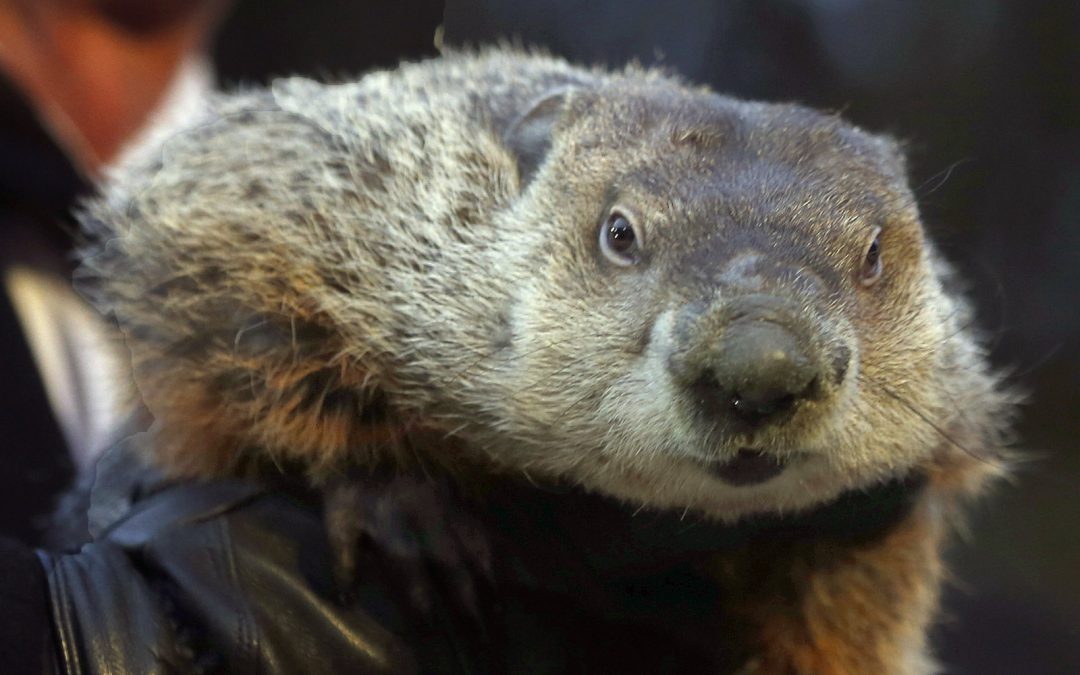Hello folks, as we all follow closely is this special day in History to guide
us when we would open our new anticipated season of 2017.
Let’s look at the data and the history of this little creature that predicts
the weather!
The origins of Groundhog Day lie in medieval Europe, where the day was known as Candlemas Day, a Christian festival named for the custom of lighting candles on that day. There were sayings that carried the observations of the time of year in general.
Groundhog Day
Groundhog Day is February 2, and is celebrated in Canada and the US. According to legend, the groundhog emerges from its burrow at noon on that day to look for its shadow. If it is a sunny day and the groundhog sees its shadow, according to folklore it becomes frightened and returns to its hole to sleep, and winter continues for 6 more weeks. If it does not see its shadow, it remains outside because the worst of winter is over and warmer weather is on its way.
Origins
The origins of Groundhog Day lie in medieval Europe, where the day was known as Candlemas Day, a Christian festival named for the custom of lighting candles on that day. There were sayings that carried the observations of the time of year in general. In Scotland, conventional wisdom said, “If Candlemas Day is bright and clear, There’ll be twa [two] winters in the year.” In England, the saying was somewhat more elaborate: “If Candlemas be fair and bright, Come, Winter, have another flight. If Candlemas brings clouds and rain, Go Winter, and come not again.” In addition to being attentive to the changing seasons, Europeans may have had a legend whereby hedgehogs predicted the beginning of spring by the state of the weather on Candlemas Day. When European settlers came to North America, they brought the February 2 legend with them. There being no hedgehogs in North America, they transferred the predictive role to groundhogs.
Early settlers hoped for signs of an early spring so they could begin planting and shorten the time to harvest, especially with winter provisions dwindling. What settlers did not realize was that the groundhog sleeps later than the European hedgehog and is less likely to stir even on warm winter days. By February 2, the worst of winter’s weather is usually over in western Europe, but Canadian winters are generally longer, with much more cold and snow yet to come. In early February, the openings to groundhog burrows are usually buried under deep layers of snow and ice.
There is some truth to the shadow aspect of the legend. Sunny days in winter are generally associated with colder, drier arctic air and cloudy days with milder, moist maritime air. Given the tendency for weather conditions to persist for several days before changing, the weather on any February 2 may continue for a few days, but not necessarily any longer. Since seasons tend to follow a pattern, 6 more weeks of winter, rather than an early spring, is a statistically better option in Canada.

Furry Prognosticators
Groundhog Day has become a means of inserting a little fun–and hope for spring–into long, cold Canadian winters. The North American tradition of watching for a groundhog to emerge from its burrow to make a prediction began with German settlers in Punxsutawney, Pa, in 1887. That tradition has grown into a week-long festival starring Punxsutawney Phil. In Canada, Wiarton Willie is the primary groundhog predictor. He is an albino groundhog who lives in Wiarton, Ont (merged as South Bruce Peninsula in 1999), near Georgian Bay. He has been making his predictions since 1956; the role of Willie has been played by several groundhogs over the years. Like Punxsutawney Phil, Wiarton Willie does not live in a burrow in the wild; he lives in a special house across from Bluewater Park, away from predators.
It is unlikely that Willie would appear above ground on his own until early to mid-March, 6 – 8 weeks after February 2. He is awakened from hibernation by the town’s “Shadow Cabinet” to make his prediction. Wiarton Willie is not alone in his role as weather forecaster; he is joined by groundhogs across the country, including Shubenacadie Sam (Nova Scotia), Brandon Bob (Manitoba) and Balzac Billy (Alberta).

Meteorological Records
Groundhog Day organizers maintain that the rodents’ forecasts are accurate 75 to 90% of the time. However, meteorological records prove that the groundhogs’ success rate is quite low. A study of weather data over several decades for 13 cities across Canada reveals there was an equal number of cloudy and sunny days on February 2. During that period, the groundhogs’ predictions were correct only 37% of the time; ie, cold winter weather continued for several weeks following the appearance of sharp shadows on February 2, or were much milder than usual when that day was too cloudy for a shadow to be seen. However, for nearly two-thirds of the years the groundhogs’ forecasts turned out to be wrong. Given that in this case 33% accuracy can occur by chance, a score of 37% is not significant.
The second column in the table represents the chance of a groundhog seeing its shadow (percent), with the third column representing the times a groundhog forecasts correctly (percent).
| St John’s | 53 | 41 |
| Charlottetown | 50 | 41 |
| Halifax | 50 | 42 |
| Fredericton | 48 | 34 |
| Montréal | 52 | 36 |
| Toronto | 54 | 29 |
| Ottawa | 48 | 42 |
| Winnipeg | 78 | 30 |
| Regina | 63 | 38 |
| Edmonton | 60 | 26 |
| Vancouver | 23 | 35 |
| Whitehorse | 43 | 42 |
| Yellowknife | 50 | 50 |

